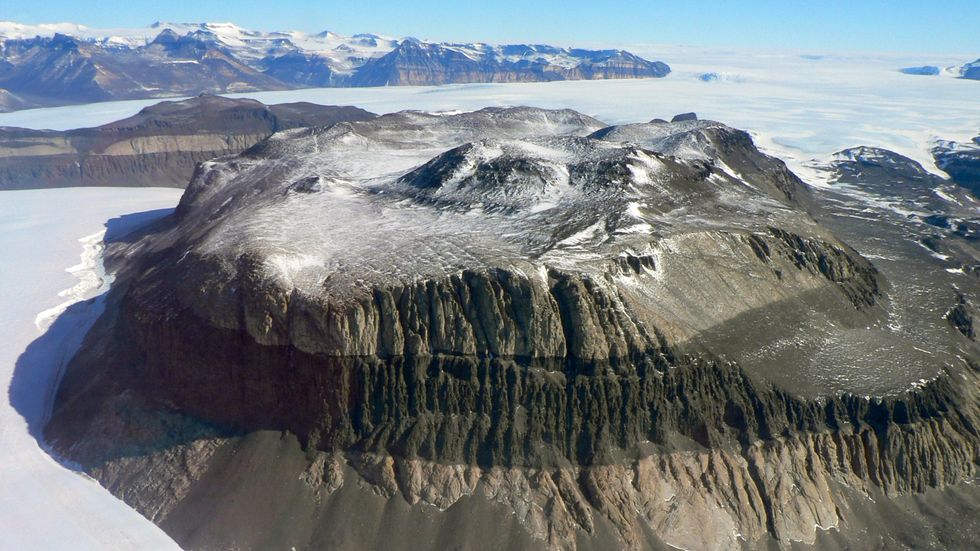Antarctica's 'bleeding waterfalls' mystery unmasked as scientists reveal secrets behind natural phenomena

Researchers were stumped as to how 'Blood Falls' is able to stay liquid in the Antarctic deep freeze
Don't Miss
Most Read
Latest
A mystery behind Antarctica's "bleeding waterfalls" has finally been solved as scientists have revealed the secrets behind the bizarre natural phenomena.
Blood Falls, located in the McMurdo Dry Valleys, is named for its red-coloured water which seeps from the ice into the ocean below.
The phenomenon was first documented by geologist Thomas Griffith Taylor in 1911, and its striking appearance against Antarctica's pristine white landscape has puzzled researchers ever since.
The mystery extended beyond the water's unusual colour.

Blood Falls is named for its red-coloured water which seeps from the ice into the ocean below
|WIKIMEDIA COMMONS
With temperatures averaging nearly -19C in the region, scientists were equally baffled by how the water remained liquid rather than freezing solid in such extreme conditions.
Researchers from the University of Alaska Fairbanks made a breakthrough in 2003, finally solving the decades-old mystery.
The team, which included National Geographic explorer Erin C Pettit, employed radio-echo technology to investigate the phenomenon.
Researchers revealed that the flowing water contains extraordinarily high salt levels - double those found in the surrounding seawater.
MORE BREAKTHROUGHS AT THE POLES:

Temperatures average nearly -19C in Antarctica's McMurdo Dry Valleys
|VICTORIA UNIVERSITY OF WELLINGTON
This elevated salt content lowers the water's freezing point, explaining why it remains liquid despite the frigid Antarctic temperatures.
High iron concentrations were also found in the water - and when this iron-rich water comes into contact with air, it oxidises, creating the distinctive red, orange and brown colouration that gives Blood Falls its name.
The salt concentration effectively acts as antifreeze, preventing the water from solidifying even in Antarctica's harsh climate.
The iron content transforms the water's appearance through a simple chemical reaction.
As the iron-laden water emerges from beneath the glacier and meets oxygen in the air, oxidation occurs instantly, producing the blood-like hues.
Scientists traced the water's origins back 1.5 million years.
LATEST SCIENCE HEADLINES FROM GB NEWS:

National Geographic explorer Erin C Pettit has shed light on why Blood Falls looks the way it does
|WIKIMEDIA COMMONS
During this period, a saltwater lake existed in the region before a glacier advanced over it, sealing the water beneath the ice for millennia.
The trapped water eventually found its way out through Blood Falls.
Pettit said: "While it sounds counterintuitive, water releases heat as it freezes, and that heat warms the surrounding colder ice."
Combined with the brine's lower freezing temperature, this enables the salty water to move through the extremely cold ice.
"Taylor Glacier is now the coldest known glacier to have persistently flowing water," Pettit said.











